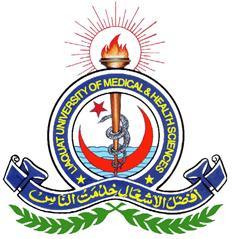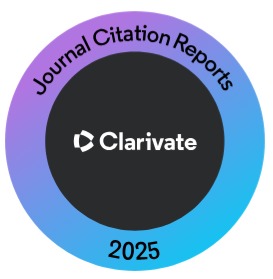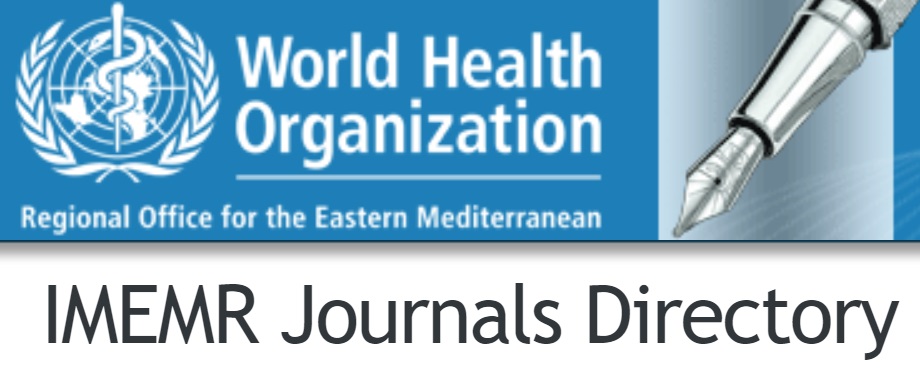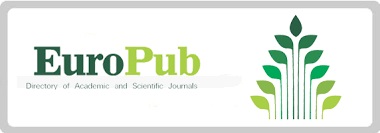Review of non-ionized electromagnetic waves effects on human parasites: a systematic review
Keywords:
Electromagnetic radiations, Electromagnetic wave, Human, Health, Non-ionizing Irradiation,, Parasitic diseasesAbstract
So far, various natural and synthetic compounds have been used to treat and control parasites and their diseases, but now researchers have turned to mechanical and physical methods. This study aimed to review and categorize studies in which non-ionizing electromagnetic waves were used to control or treat human parasites. A systematic search was conducted. All English or full Persian articles on the investigation of electromagnetic waves on worms (Helminths) and protozoan parasites worldwide (from 1970 to 2023) indexed in Google Scholar, Science Direct, PubMed, Scopus, Medline, Medlib, Scientific Information Database, ProQuest, IranMedex, IranDoc, Embase and Magiran were collected and reviewed. Finally, 53 articles were included in the study. Its information was extracted and organized in tables based on the kind of non-ionizing wave.
The results of this study categorized the information obtained from the articles based on the type of non-ionizing waves and parasites. The findings of this study may serve as a guide for researchers as they create and execute future studies. This review study exposed the capability of non-ionizing electromagnetic waves to inactivate, control and treat parasitic diseases. This review revealed gaps in this field of study, and a road map was provided to design and implement new projects.
References
Kerboeuf D, Riou M, Guegnard FG. Flavonoids and related compounds in parasitic disease control. Mini Rev Med Chem. 2008; 8(2): 116-28. doi: 10.2174/138955708783498168.
Fenwick A, Savioli L, Engels D, Robert Bergquist N, Todd MH. Drugs for the control of parasitic diseases: current status and development in schistosomiasis. Trends Parasitol. 2003; 19(11): 509-15. doi: 10.1016/j.pt.2003.09.005.
Ozlim Caliskan S, Ertabaklar H, Dincer Bilgin M, Ertug S. Assessment of the Effects of Extremely Low-Frequency Electromagnetic Fields on Toxoplasma Gondii. Iran J Parasitol. 2016; 11(2): 159-167.
Eskandari S, Azimzadeh A, Bahar M, Safai Naraghi Z, Javadi A, Khamesipour A et al. Efficacy of Microwave and Infrared Radiation in the Treatment of the Skin Lesions Caused by Leishmania Major in an Animal Model. Iran J Public Health. 2012; 41(8): 80-83.
Eslamirad Z, Haji Hajihossein R, Soleimani H. Evaluating Potential of Electromagnetic Microwaves on Destruction Acanthamoeba Cysts. CMJA. 2020; 9(4): 3868-77.
Eslamirad Z, Hajihossein R, Soleimani H. Is Shortwave Diathermy Effective on Mortality of Protoscolices? Open Access Macedon J Med Sci. 2020; 8(A): 55-8. doi: 10.3889/oamjms. 2020.3816.
Eslamirad Z, Soleimani H, Hajihossein R, Rafiei F. Evaluation of lethal effect of microwave exposure on protoscolices of hydatid cyst in vitro. Asian Pac J Trop Dis. 2015; 5(10): 821-4. doi: 10.1016/522222-1808(15)60938-0.
Soleimani H, Hajihossein R, Eslamirad Z. Mobile Phone Radiation: Its Efficacy as Protoscolicidals. Turkiye Parazitol Derg. 2020; 44(4): 203-206. doi: 10.4274/tpd.galenos. 2020.6722.
Alonzo M, Bos A, Bennett S, Ferral H. The Emprint™ Ablation System with Thermosphere™ Technology: One of the Newer Next-Generation Microwave Ablation Technologies. Semin Intervent Radiol. 2015; 32(4): 335-8. doi: 10.1055/s-0035-1564811.
Harid V, Kim H, Li BZ, Lei T. A method for non-destructive microwave focusing for deep brain and tissue stimulation. PLoS One. 2023; 18(2): e0278765. doi: 10.1371/journal.pone. 0278765.
Velasco-Castrejon O, Walton B, Rivas B, Garcia M, Lazaro G, Hobart O et al. Treatment of Cutaneous Leishmaniasis with Localized Current Field (Radio Frequency) in Tabasco, Mexico. Am J Trop Med Hyg. 1997; 57: 309-12. doi: 10.4269/ajtmh.1997.57.309.
Sadeghian G, Nilfroushzadeh MA, Iraji F. Efficacy of local heat therapy by radiofrequency in the treatment of cutaneous leishmaniasis, compared with intralesional injection of meglumine antimoniate. Clin Exp Dermatol. 2007; 32(4): 371-4. doi: 10.1111/j.1365-2230.2007.02405.x. Epub 2007 Mar 21.
Wainwright K, Lagunas-Solar M, Miller M, Barr B, Melli A, Packham A et al. Radiofrequency-Induced Thermal Inactivation of Toxoplasma gondii Oocysts in Water. Zoonoses Public Health. 2009; 57: 74-81. doi: 10.1111/j.1863-2378.2009.01280.x. Epub 2009 Sep 10.
Aronson NE, Wortmann GW, Byrne WR, Howard RS, Bernstein WB, Marovich MA et al. A Randomized Controlled Trial of Local Heat Therapy Versus Intravenous Sodium Stibogluconate for the Treatment of Cutaneous Leishmania major Infection. PLOS Neglected Tropical Diseases. 2010; 4(3): e628.
Sazgarnia A, Taheri AR, Soudmand S, Jafari Parizi A, Rajabi O, Sadat Darbandi M. Antiparasitic effects of gold nanoparticles with microwave radiation on promastigotes and amastigotes of Leishmania major. Int J Hyperthermia. 2013; 29(1): 79-86.
Coronado LM, Stoute JA, Nadovich CT, Cheng J, Correa R, Chaw K et al. Microwaves can kill malaria parasites non-thermally. Front. Cell. Infect. Microbiol. 2023: 13: 955134.
Aksoy U, Sahin S, Ozkoc S, Ergor G. The effect of electromagnetic waves on the growth of Entamoeba histolytica and Entamoeba dispar. 2005; 26(9): 1388-90.
Cammaerts M-C, Debeir O, Cammaerts R. Changes in Paramecium caudatum (Protozoa) near a switched-on GSM telephone. Electromagn Biol Med. 2011; 30(1): 57-66.
Sarapultseva EI, Igolkina JV. Experimental Study of Relationship between Biological Hazards of Low-Dose Radiofrequency Exposure and Energy Flow Density in Spirostomum Ambiguum Infusoria Exposed at a Mobile Connection Frequency (1 GHz). Bull Exp Biol Med.. 2011; 151(4): 477-480. doi: 10.1007/s10517-011-1361-5.
Sarapultseva EI, Igolkina JV, Tikhonov VN, Dubrova YE. The in vivo effects of low-intensity radiofrequency fields on the motor activity of protozoa. Int J Radiat Biol. 2014; 90(3): 262-7.
Uskalova DV, Igolkina YV, Sarapultseva EI. Intravital Computer Morphometry on Protozoa: A Method for Monitoring of the Morphofunctional Disorders in Cells Exposed in the Cell Phone Communication Electromagnetic Field. Bull Exp Biol Med. 2016; 161(4): 554-7.
Clancy JL, Hargy TM, Marshall MM, Dyksen JE. UV light inactivation of Cryptosporidium oocysts. Journal AWWA. 1998; 90(9): 92-102.
Clancy JL, Bukhari Z, Hargy TM, Bolton JR, Dussert BW, Marshall MM. Using UV to inactivate Cryptosporidium. Journal AWWA. 2000; 92(9): 97-104.
Craik SA, Finch GR, Bolton JR, Belosevic M. Inactivation of Giardia muris cysts using medium-pressure ultraviolet radiation in filtered drinking water. Water Res. 2000; 34(18): 4325-32.
Craik SA, Weldon D, Finch GR, Bolton JR, Belosevic M. Inactivation of cryptosporidium parvum oocysts using medium- and low-pressure ultraviolet radiation. Water Res. 2001; 35(6): 1387-98.
Linden KG, Shin G-A, Faubert G, Cairns W, Sobsey MD. UV Disinfection of Giardia lamblia Cysts in Water. Environ Sci Technol Lett. 2002; 36(11): 2519-22.
Morita S, Namikoshi A, Hirata T, Oguma K, Katayama H, Ohgaki S et al. Efficacy of UV irradiation in inactivating Cryptosporidium parvum oocysts. Appl Environ Microbiol. 2002; 68(11): 5387-93.
Campbell AT, Wallis P. The effect of UV irradiation on human-derived Giardia lamblia cysts. Water Res. 2002; 36(4): 963-9.
Maya C, Beltrán N, Jiménez B, Bonilla P. Evaluation of the UV disinfection process in bacteria and amphizoic amoebae inactivation. Water Supply. 2003; 3(4): 285-91.
Shin G, Linden K, Arrowood M, Sobsey M. Low-pressure UV inactivation and DNA repair potential of Cryptosporidium parvum oocysts. Appl Environ Microbiol. 2001; 67(7): 3029-32.
Hayes SL, Rice EW, Ware MW, Schaefer FW. Low-pressure ultraviolet studies for inactivation of Giardia muris cysts. J Appl Microbiol. 2003; 94(1): 54-9.
Zimmer JL, Slawson RM, Huck PM. Inactivation and potential repair of Cryptosporidium parvum following low- and medium-pressure ultraviolet irradiation. Water Res. 2003; 37(14): 3517-23.
Rochelle PA, Upton SJ, Montelone BA, Woods K. The response of Cryptosporidium parvum to UV light. Trends Parasitol. 2005; 21(2): 81-7.
Johnson AM, Linden K, Ciociola KM, De Leon R, Widmer G, Rochelle PA. UV Inactivation of Cryptosporidium hominis as Measured in Cell Culture. Appl Environ Microbiol. 2005; 71(5): 2800-2.
Amoah K, Craik S, Smith DW, Belosevic M. Inactivation of Cryptosporidium oocysts and Giardia cysts by ultraviolet light in the presence of natural particulate matter. J WATER SUPPLY RES T. 2005; 54(3): 165-78.
Neto RC, Santos JU, Franco RMB. Evaluation of activated sludge treatment and the efficiency of the disinfection of Giardia species cysts and Cryptosporidium oocysts by UV at a sludge treatment plant in Campinas, south-east Brazil. Water Sci Technol. 2006; 54(3): 89-94.
Li D, Craik SA, Smith DW, Belosevic M. Comparison of levels of inactivation of two isolates of Giardia lamblia cysts by UV light. Appl Environ Microbiol. 2007; 73(7): 2218-23.
Van Voorhis WC, Barrett LK, Eastman RT, Alfonso R, Dupuis K. Trypanosoma cruzi inactivation in human platelet concentrates and plasma by a psoralen (amotosalen HCl) and long-wavelength UV. Antimicrob Agents Chemother. 2003; 47(2): 475-9.
Eastman RT, Barrett LK, Dupuis K, Buckner FS, Van Voorhis WC. Leishmania inactivation in human pheresis platelets by a psoralen (amotosalen HCl) and long?wavelength ultraviolet irradiation. Transfusion. 2005; 45(9): 1459-63.
Grellier P, Benach J, Labaied M, Charneau S, Gil H, Monsalve G et al. Photochemical inactivation with amotosalen and long-wavelength ultraviolet light of Plasmodium and Babesia in platelet and plasma components. Transfusion. 2008; 48(8): 1676-84.
Li D, Craik SA, Smith DW, Belosevic M. Survival of Giardia lamblia trophozoites after exposure to UV light. FEMS Microbiology Letters. 2008; 278(1): 56-61.
Li D, Craik SA, Smith DW, Belosevic M. Infectivity of Giardia lamblia cysts obtained from wastewater treated with ultraviolet light. Water Res. 2009; 43(12): 3037-46.
Shin G-A, Linden KG, Faubert G. Inactivation of Giardia lamblia cysts by polychromatic UV. Lett Appl Microbiol. 2009; 48(6): 790-2.
Weber C, Marchat LA, Guillen N, López-Camarillo C. Effects of DNA damage induced by UV irradiation on gene expression in the protozoan parasite Entamoeba histolytica. Mol Biochem Parasitol. 2009; 164(2): 165-9.
Santos LUd, Alves DP, Guaraldo AMA, Cantusio Neto R, Durigan M, Franco RMB. Infectivity of Giardia duodenalis Cysts from UV Light-Disinfected Wastewater Effluent Using a Nude BALB/c Mouse Model. ISRN Parasitology. 2013; 2013: 713958.
Cervero-Aragó S, Sommer R, Araujo RM. Effect of UV irradiation (253.7 nm) on free Legionella and Legionella associated with its amoebae hosts. Water Res. 2014; 67: 299-309.
Mayelifar K, Taheri A, Rajabi O, Sazgarnia A. Ultraviolet B Efficacy in Improving Anti-leishmanial Effects of Silver Nanoparticles. Iran J Basic Med Sci. 2015; 18(7): 677-683.
Einarsson E, Svärd S, Troell K. UV irradiation responses in Giardia intestinalis. Exp Parasitol. 2015; 154: 25-32. doi: 10.1016/j.exppara.2015.03.024. Epub 2015 Mar 28.
Adeyemo FE, Singh G, Reddy P, Bux F, Stenström TA. Efficiency of chlorine and UV in the inactivation of Cryptosporidium and Giardia in wastewater. PLoS ONE. 2019; 14: e0216040.
Brunetti E, Filice C. Radiofrequency thermal ablation of echinococcal liver cysts. Lancet. 2001; 358(9291): 1464. doi: 10.1016/S0140-6736(01)06518-7.
Zacharoulis D, Poultsidis A, Roundas C, Tepetes K, Hatzitheofilou C. Liver Hydatid Disease: Radiofrequency-Assisted Pericystectomy. Ann R Coll Surg Engl. 2006; 88: 499-500.
Botsa E, Thanou I, Nikas I, Thanos L. Treatment of Hepatic Hydatid Cyst in a 7-Year-Old Boy Using a New Type of Radiofrequency Ablation Electrode. Am J Med Case Rep. 2017; 18: 953-8.
Herlich H, Tromba F. Effect of Ultraviolet Radiation on Some Gastrointestinal Nematode Parasites of Cattle. J Parasitol. 1980; 66(4): 692-4.
Ariyo AA, Oyerinde JP. Effect of ultraviolet radiation on survival, infectivity and maturation of Schistosoma mansoni cercariae. Int J Parasitol. 1990; 20(7): 893-7.
Ruelas DS, Karentz D, Sullivan JT. Sublethal Effects of Ultraviolet B Radiation on Miracidia and Sporocysts of Schistosoma mansoni: Intramolluscan Development, Infectivity, and Photoreactivation. J Parasitol. 2007; 93(6): 1303-10.
Dehghani M, Zarei A, Mahvi A, Jahed G, Kia E. Investigating the Efficiency of Ultraviolet Irradiation for Inactivation of Free-Living Nematodes in Water.[In Farsi]. Iran J Health Environ. 2012; 4(4): 219-225.
Studer A, Lamare M, Poulin R. Effects of ultraviolet radiation on the transmission process of an intertidal trematode parasite. Parasitology. 2012; 139: 537-46.
Kent ML, Watral V, Villegas EN, Gaulke CA. Viability of Pseudocapillaria tomentosa Eggs Exposed to Heat, Ultraviolet Light, Chlorine, Iodine, and Desiccation. Zebrafish. 2019; 16(5): 460-8.
Pole JC. Quarzlampen für ultraviolettes Licht in der Praxis. In: Pole JC, editor. Die Quarzlampe: ihre Entwicklung und ihr heutiger Stand. Berlin, Heidelberg: Springer Berlin Heidelberg; 1914. p. 74-84.
Tyzzer EE, Honeij JA. The Effects of Radiation on the Development of Trichinella Spiralis, with Respect to Its Application to the Treatment of Other Parasitic Diseases. J Parasitol. 1916; 3(2): 43-56.
Lloyd JJ. Ultraviolet Radiation in Medicine. In: Webster JG, editor. Encyclopedia of Medical Devices and Instrumentation. Second ed: John Wiley & Sons, Inc.; 2006. p. 473-90.
Eslamirad Z, Soleimani H. Investigating the Potential of Protoscolices for Cyst Formation under in vivo Microwave Radiation. CMJA. 2019; 9(1): 3598-606.
Hijnen WAM, Beerendonk EF, Medema GJ. Inactivation credit of UV radiation for viruses, bacteria and protozoan (oo)cysts in water: A review. Water Res. 2006; 40(1): 3-22.
Owusu-Ofori S, Kusi J, Owusu-Ofori A, Freimanis G, Olver C, Martinez CR et al. Treatment of Whole Blood With Riboflavin and UV Light: Impact on Malaria Parasite Viability and Whole Blood Storage. Shock. 2015; 44(Suppl 1): 33-8.
Mayelifar K, Sazgarnia A, Yadegari Dehkordi S, Eshghi H, Attaran N, Soudmand Salarabadi S. Inhibitory Effect of Electroporation and Silver Nanoparticles on the Growth of Leishmania major Promastigotes Influence of Pulse Duration. Med J Mashhad Univ Med Sci. 2013; 56(4): 247-254.
Lanteri MC, Santa-Maria F, Laughhunn A, Girard YA, Picard-Maureau M, Payrat JM et al. Inactivation of a broad spectrum of viruses and parasites by photochemical treatment of plasma and platelets using amotosalen and ultraviolet A light. Transfusion. 2020; 60(6): 1319-31.
O'Bannon JH, Good JM. Applications of microwave energy to control nematodes in soil. Journal of nematology. 1971; 3(1): 93-4.
Rahi G, Rich J. Potential of Microwaves to Control Plant-Parasitic Nematodes in Soil. J microw power electromagn energy. 2008; 42: 5-12.
Downloads
Published
How to Cite
Issue
Section
License
Copyright (c) 2024 Journal of Liaquat University of Medical & Health Sciences

This work is licensed under a Creative Commons Attribution-NonCommercial-ShareAlike 4.0 International License.
Submission of a manuscript to the journal implies that all authors have read and agreed to the content of the undertaking form or the Terms and Conditions.
When an article is accepted for publication, the author(s) retain the copyright and are required to grant the publisher the right of first publication and other non-exclusive publishing rights to JLUMHS.
Articles published in the Journal of Liaquat University of Medical & health sciences are open access articles under a Creative Commons Attribution-Noncommercial - Share Alike 4.0 License. This license permits use, distribution and reproduction in any medium; provided the original work is properly cited and initial publication in this journal. This is in accordance with the BOAI definition of open access. In addition to that users are allowed to remix, tweak and build upon the work non-commercially as long as appropriate credit is given and the new creations are licensed under the identical terms. Or, in certain cases it can be stated that all articles and content there in are published under creative commons license unless stated otherwise.























